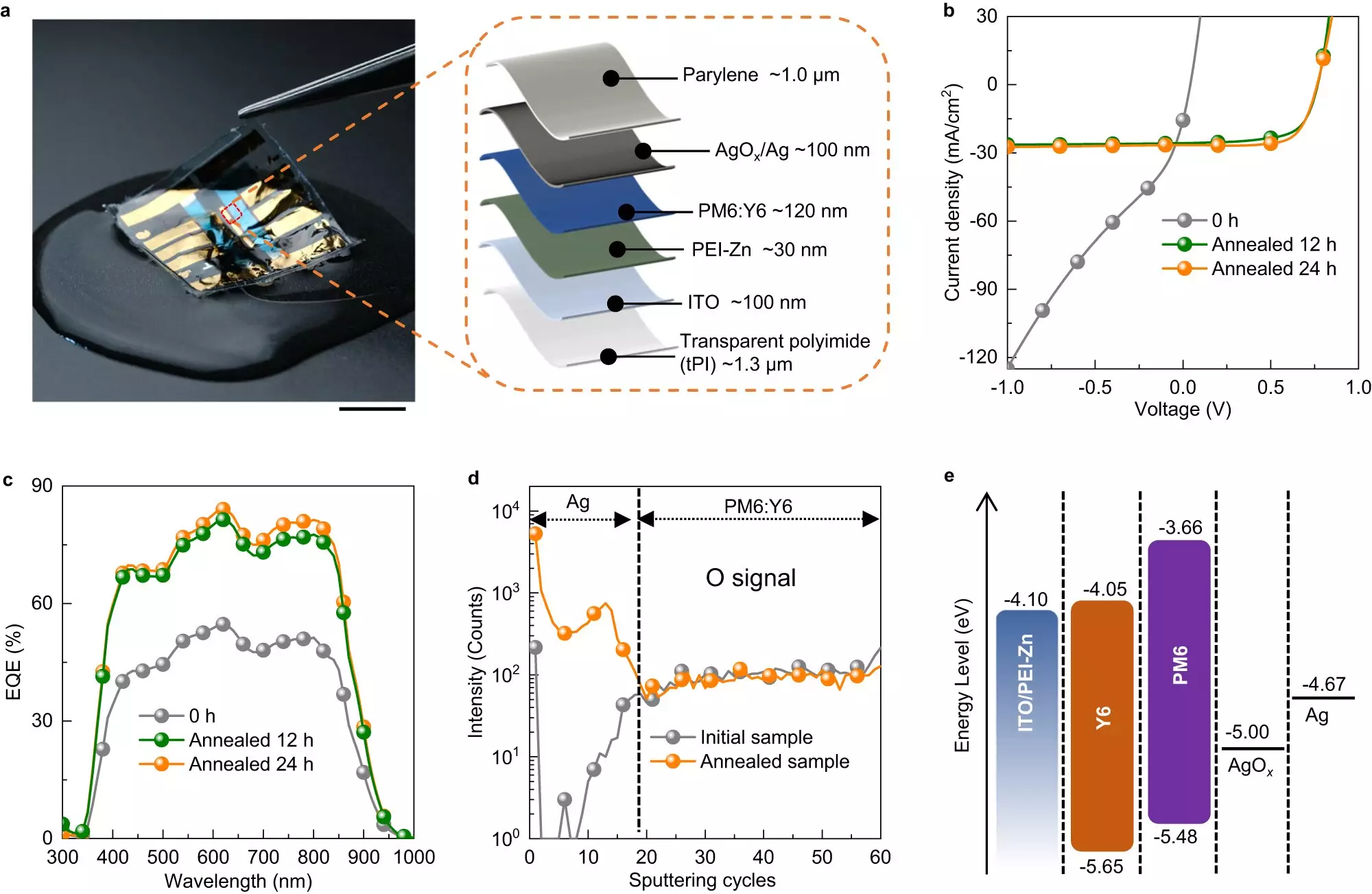Organic photovoltaics have long been hailed as the future of solar energy due to their potential use in wearable electronics. However, one major hurdle that researchers have faced is finding a way to make these devices waterproof without sacrificing flexibility. In a groundbreaking development, scientists at the RIKEN Center for Emergent Matter Science have successfully created an organic photovoltaic film that addresses this challenge head-on.
Traditionally, photovoltaic films consist of multiple layers, each playing a crucial role in the energy conversion process. However, previous attempts to waterproof these films often required additional layers that compromised the overall flexibility of the device. To combat this issue, the researchers in this study took a different approach. Instead of sequentially layering the components, they directly deposited the anode layer onto the active layers, improving the adhesion between the layers.
Through a meticulous thermal annealing process, the researchers were able to create a thin film that measured just 3 micrometers. Despite its slim profile, the film exhibited impressive resilience when put to the test. Immersed in water for four hours, the film retained 89% of its initial performance. Even when subjected to stretching underwater, it maintained 96% of its efficiency after 300 cycles. Most notably, the film survived a full wash cycle in a washing machine, a feat that had never been achieved before in the realm of organic photovoltaics.
The implications of this breakthrough are far-reaching. Not only does this new method pave the way for the creation of waterproof and flexible solar cells for wearable electronics, but it also sets a precedent for future advancements in the field of organic photovoltaics. As Kenjiro Fukuda, one of the corresponding authors of the paper, stated, “What we have created is a method that can be used more generally.” With the potential for integration into a wide range of applications, from clothing that can charge devices on the go to solar-powered medical monitoring systems, the possibilities are endless.
The development of a waterproof and flexible organic photovoltaic film represents a major milestone in the field of solar energy technology. By overcoming the challenge of maintaining flexibility while achieving waterproofing, researchers have opened up new avenues for the integration of solar cells into everyday objects. With further research and innovation, the future of organic photovoltaics looks brighter than ever.


Leave a Reply